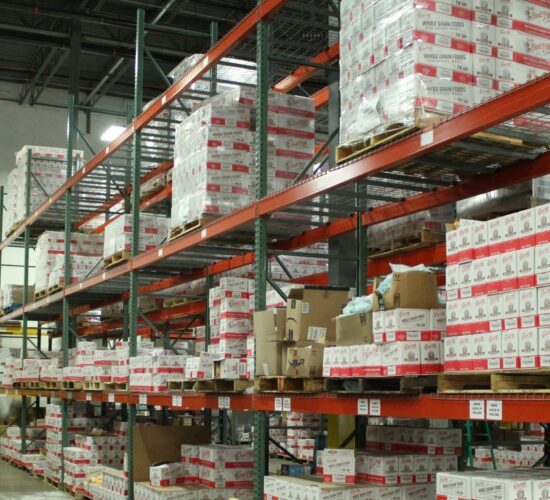Guarding the Supply Chain: Best Practices for Securing Warehouses and Distribution Centers

Warehouses and distribution centers are the beating heart of modern supply chains. They house valuable goods, manage constant movement, and keep customer promises on track. But with that importance comes vulnerability. Theft, accidents, and operational risks can cost businesses millions—not just in losses, but in reputation. The good news? Strong security practices don’t have to be complicated. They just need to be practical, consistent, and human-centered.
Below are the best practices that businesses of all sizes can use to keep warehouses and distribution centers safe, efficient, and trustworthy.
Start with Thoughtful Access Control
The simplest step is often the most effective: knowing who’s coming in and out. Access control can be as straightforward as issuing ID badges and logging visitors, or as advanced as using biometric scanners. Smaller facilities might rely on locked gates and sign-in sheets, while larger ones often turn to electronic systems. The key is consistency. A warehouse in Texas, for example, reduced theft incidents by half simply by requiring drivers to check in with security before unloading.
Layer Security with Cameras and Visibility
Cameras aren’t just about catching bad actors—they deter them. A well-lit, well-monitored facility signals to anyone with bad intentions that they’re being watched. But cameras alone don’t solve everything. They need regular maintenance, proper placement, and staff who actually monitor footage. In one Midwest distribution center, managers noticed recurring damage in a loading bay. Reviewing camera footage revealed it wasn’t theft—it was a careless forklift operation. Addressing it saved thousands in repair costs.
Protect the Perimeter First
A secure building starts outside its walls. Fences, gates, and lighting create the first line of defense. Bright exterior lighting discourages trespassers, and clear signage (“Authorized Personnel Only”) adds an extra layer of deterrence. Some facilities also use motion sensors to detect unusual activity at night. One logistics company even partnered with local law enforcement to have patrol cars swing by during late shifts, creating an additional sense of safety for staff.
Don’t Overlook Employee Training
Security isn’t just about locks and cameras—it’s about people. Employees are often the first line of defense, but only if they know what to look for. Training staff to spot suspicious behavior, handle deliveries securely, and follow safety protocols makes a huge difference. A real-world example: a warehouse in Florida discovered that a spike in missing items was tied to unsecured pallets. Once staff were trained to double-check wrapping and seals, losses dropped dramatically.
Secure Goods Inside the Facility
Not everything in a warehouse is equally valuable—or equally tempting. High-value items like electronics, alcohol, or pharmaceuticals need extra precautions. Cage storage, lockable cabinets, and limited access zones keep these goods safer. Some facilities create “red zones” for high-risk inventory, requiring additional authorization to enter. This ensures that even if someone gains access to the warehouse floor, they can’t easily walk off with the most expensive products.
Use Technology to Track and Verify
Modern warehouse management systems (WMS) aren’t just for inventory—they’re part of security. Barcoding, RFID tags, and digital logs help verify that products move where they’re supposed to. These systems create a trail, making it harder for losses to go unnoticed. For example, a distribution center in California used RFID tracking to uncover a recurring discrepancy between shipping and receiving. It turned out that a third-party driver had been rerouting small portions of cargo. The digital paper trail exposed the issue.
Balance Security with Employee Trust
It’s important to remember that warehouses aren’t just storage—they’re workplaces. Overly strict security can feel oppressive, leading to low morale and turnover. The best facilities balance strong safeguards with respect for employees. For instance, instead of random searches, some warehouses opt for transparent procedures like bag checks done by same-gender staff, or installing lockers so employees don’t feel unfairly targeted. Security should protect, not alienate.
Keep Reviewing and Improving
Security isn’t a “set it and forget it” project. Threats evolve, staff change, and technology advances. That’s why regular audits are essential. Some companies schedule quarterly reviews, while others tie audits to insurance renewals. Even simple walk-throughs can reveal gaps—like a broken fence, a burned-out light, or a blind spot in camera coverage. Think of it as housekeeping for security: the more often you tidy up, the fewer problems pile up.
Wrapping It All Together
Securing warehouses and distribution centers isn’t about creating a fortress—it’s about creating a safe, efficient environment where people and products are protected. From access control and perimeter safeguards to employee training and technology, each layer works together. The facilities that thrive are those that treat security not as an afterthought but as an everyday practice.
A secure warehouse doesn’t just reduce theft or accidents—it builds trust. Customers know their products are safe. Employees feel confident in their workplace. And companies strengthen the backbone of their supply chains.
Additional Information
- Blogs
- Ari Raptis